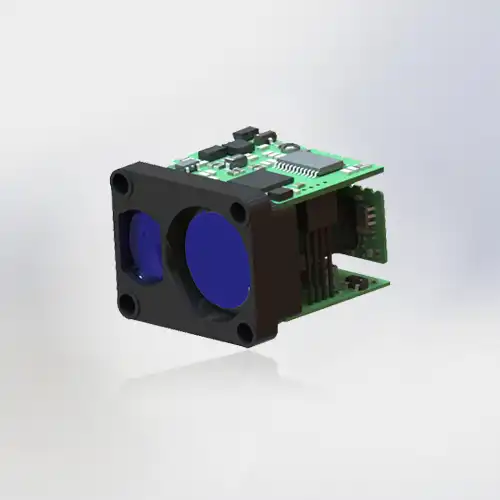How accurate are laser rangefinders?
Laser Rangefinders are significantly more exact, most will get you the right estimation inside a yard, an even case to be precise to 1/2 or even 1/10 of a yard. This can reassure you when you are picking a club by realizing that the banner is really 126 yards away and not 118 yards away.
Are laser rangefinders dangerous?
When used properly, laser rangefinders are generally safe. They emit a low-power laser beam, which is typically classified as a Class 1 or Class 2 laser. These classes are considered safe for the eyes under normal use conditions. However, it is essential to avoid direct eye exposure to the laser beam and to follow the manufacturer’s safety guidelines. The 3000m Laser Rangefinder is designed with safety features to prevent accidental exposure, making it safe for both professional and recreational use.
How does a laser rangefinder calculate distance?
A laser rangefinder calculates distance by emitting a laser beam towards a target and measuring the time it takes for the beam to bounce back. This process is known as "time of flight" measurement. The device sends out a laser pulse, which reflects off the target and returns to the rangefinder. The time taken for this round trip is recorded and used to calculate the distance, based on the speed of light. The 3000m Laser Rangefinder uses advanced algorithms to ensure precise measurements, even over long distances.
Are laser rangefinders better than GPS?
Both laser rangefinders and GPS have their own advantages and limitations, and which one is "better" depends on specific application scenarios and requirements.
Laser rangefinders can provide very accurate distance measurements in a relatively short range, with high precision and quick response. They are often used in scenarios such as construction, surveying, and some industrial measurements where accurate local distance determination is crucial.
GPS, on the other hand, is excellent for providing global positioning information, allowing for determination of location coordinates over large areas. It is widely used in navigation, mapping, and outdoor activities.
In some cases where very accurate short-range measurements are needed, laser rangefinders may have an edge. But GPS is indispensable for broader positioning and navigation needs. So, it's not simply a matter of one being better than the other; it depends on the specific context and task at hand.
How far can a laser rangefinder go?
The range of a laser rangefinder depends on its design and specifications. High-end models, like the 3000m Laser Rangefinder, can measure distances up to 3000 meters (approximately 1.86 miles). This capability makes them suitable for applications requiring long-distance measurements, such as military operations, forestry, and construction. Factors like atmospheric conditions, target reflectivity, and beam divergence can affect the maximum range and accuracy of the measurements.
Do laser rangefinders work through glass?
Laser rangefinders generally do not work effectively through glass. Glass can refract or reflect the laser beam, causing inaccuracies in distance measurement. When the laser beam passes through a glass surface, it may split into multiple beams, resulting in erroneous readings. Therefore, for accurate measurements, it is best to use the 3000m Laser Rangefinder in an unobstructed environment without glass or other transparent barriers.
FAQ about 3000m Laser Rangefinder
Can the 3000m Laser Rangefinder measure distances accurately over long ranges?
Yes, the 3000m Laser Rangefinder is specifically designed to measure long distances accurately. With its advanced optics and precise timing mechanisms, it can measure up to 3000 meters with high accuracy. This makes it suitable for professional applications requiring reliable long-range measurements.
Is the 3000m Laser Rangefinder suitable for outdoor use?
Absolutely. The 3000m Laser Rangefinder is built to withstand various outdoor conditions. It is rugged, often waterproof, and resistant to dust and other environmental factors. This durability ensures that it performs well in diverse outdoor settings, from construction sites to open fields.
Does the 3000m Laser Rangefinder have any built-in features?
Yes, the 3000m Laser Rangefinder comes with several built-in features to enhance its functionality. These may include angle compensation, which adjusts for the incline or decline of the target, and target priority modes, which help in distinguishing between multiple targets. Some models also include Bluetooth connectivity, allowing data transfer to other devices for further analysis.
Conclusion
In conclusion, laser rangefinders, such as the 3000m Laser Rangefinder, are highly accurate tools that provide reliable distance measurements over both short and long ranges. While they are safe to use with proper precautions, their accuracy and functionality make them superior to GPS devices for specific applications. The 3000m Laser Rangefinder stands out for its long-range capability, robust outdoor suitability, and advanced features, making it an excellent choice for professionals in various fields.
Hainan Eyoung Technology Co., Ltd. has been specialized in the R&D and manufacturing of small/micro laser technology, laser signal detection technology, laser signal amplification technology, and laser ranging. Our product range includes handheld laser series, multifunctional handheld low-light devices, and infrared photoelectric pods.
With a Technology R&D Centre in Luoyang City and branches in Hainan, Xian, and other locations, we ensure top-notch quality and innovation in our products. If you are choosing your own 3000m Laser Rangefinder, welcome to contact us at evelyn@eyoungtec.com.
References
1. Laser Rangefinder Technology
2. Safety Standards for Laser Products
3. Comparison of Laser Rangefinders and GPS
4. Environmental Impact on Laser Rangefinders
5. Advanced Features of Modern Laser Rangefinders







